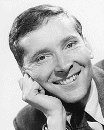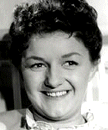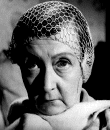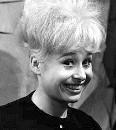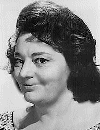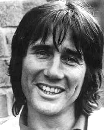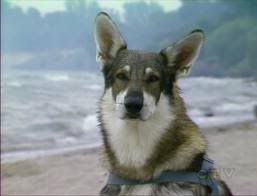
The Littlest Hobo is a Canadian television series based upon a 1958 American film of the same name directed by Charles R. Rondeau. The show first aired from 1963 to 1965, and was revived for a popular second run on CTV from 1979 to 1985.
All three productions revolved around a stray German Shepherd who wanders from town to town, helping people in need. Although the concept was similar to that of Lassie, the Littlest Hobo did not have an owner, and despite the attempts of the many people whom he helped to adopt him, he appeared to prefer to be on his own, and would head off by himself at the end of each episode.
Never actually named on-screen, the dog is often referred to by the name Hobo (though he was often given names by his many temporary owners). Hobo's background is also unexplained on-screen, and several questions are never answered: Where does he come from? How and why did he end up on the road? Is he just going anywhere and everywhere, or is he looking for someone or somewhere in particular? Although there were recurring actors in both series, the only constant was the dog.
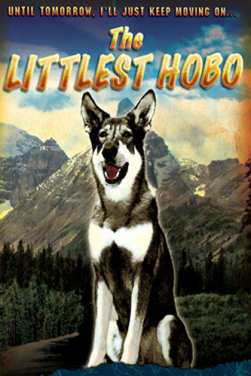
Following the 1958 film, the 1960s TV series was aired in syndication around the world, and is best remembered for a scene (later included in the closing credits of most episodes) showing the dog actually riding a parachute. This was before animal treatment regulations discouraged such activity in film productions.
The German shepherd dogs featured in both 1960s and 1980s series were owned and trained by Charles (Chuck) P. Eisenmann. The primary star was London, but several of London's relatives, including Toro, Litlon, and Thorn, also played scenes as the Hobo. Chuck used his own training methods to work with his dogs which involved educating them to think and understand very specific directions, to recognize colors and to understand English, German and French. He promoted his education method by touring with his dogs to offer live demonstrations, appearing on TV and radio shows and by writing books. Eisenmann recounts many stories from the filming of the series in his 1968 dog training book Stop! Sit! and Think. Other books he wrote include The Better Dog: The Educated Dog which contains updated training material and A Dog’s Day in Court which offers a dog's point of view towards training methods.
The dogs are German Shepherds with "reverse mask" markings. After purchasing London, Chuck began to breed his own dogs. Mostly studding out his males, even though he owned some females that he bred to as well. He bred particularly for the reverse mask, that is commonly seen on all of his dogs, and is unpopular with breeders of the German Shepherd dog as it is not in the breed standard. There is no proof of the German Shepherd bloodline for London and so there is speculation that another breed could have been mixed in as that particular brown and white sable with reverse mask coloration is achieved in mixed dog breeds such as the Tamaskan Dog, Northern Inuit and Utonagan.
Shiloh Shepherd dogs are stated to trace their heritage back to London's relatives and are inspired by the intelligence Chuck's dogs were reputed to have.
 In In 979, CTV revived the series. The New Littlest Hobo (as it was sometimes called), which ran for six seasons, was shot on videotape rather than film. It has since been syndicated in many countries including the USA and UK. In the course of its run, many Hollywood guest stars appeared such as John Ireland, Alan Hale, Jnr., Deforest Kelly, Morey Amsterdam, Patrick Macnee, Vic Morrow, Henry Gibson, John Carradine and Leslie Nielsen. In 1979, 16-year-old Mike Myers made an early acting appearance playing a paraplegic boy in the episode "Boy on Wheels".
In In 979, CTV revived the series. The New Littlest Hobo (as it was sometimes called), which ran for six seasons, was shot on videotape rather than film. It has since been syndicated in many countries including the USA and UK. In the course of its run, many Hollywood guest stars appeared such as John Ireland, Alan Hale, Jnr., Deforest Kelly, Morey Amsterdam, Patrick Macnee, Vic Morrow, Henry Gibson, John Carradine and Leslie Nielsen. In 1979, 16-year-old Mike Myers made an early acting appearance playing a paraplegic boy in the episode "Boy on Wheels".

The series aired on CTV on Thursday nights at 7:30 P.M.
Plots ranged from the simple "dog-helps-person" stories to secret agent type adventures. The series theme song, "Maybe Tomorrow", was sung by Terry Bush. In 2005, Bush commercially released the song on his debut album, entitled Maybe Tomorrow. The theme song is also used in a Dulux Paint television commercial in the United Kingdom in 2011.
Trainer Chuck Eisenmann used several dogs to play the role of "London" as he had selected dogs entirely based on their appearance. He determined which dogs to use for the scenes by making use of their abilities such as if one dog did not mind carrying objects or if one were small enough to safely jump through a car window and maneuver through the seats. In Chuck's book A Dog's Day in Court one of the dogs used in the 1970s series was London's grandson, who was also known as London. Chuck Eisenmann passed away in Roseburg, Oregon on September 6, 2010 at the age of 91. This series, which remains a popular children's program, continues to be shown as reruns on CTV, A and other national networks.






























